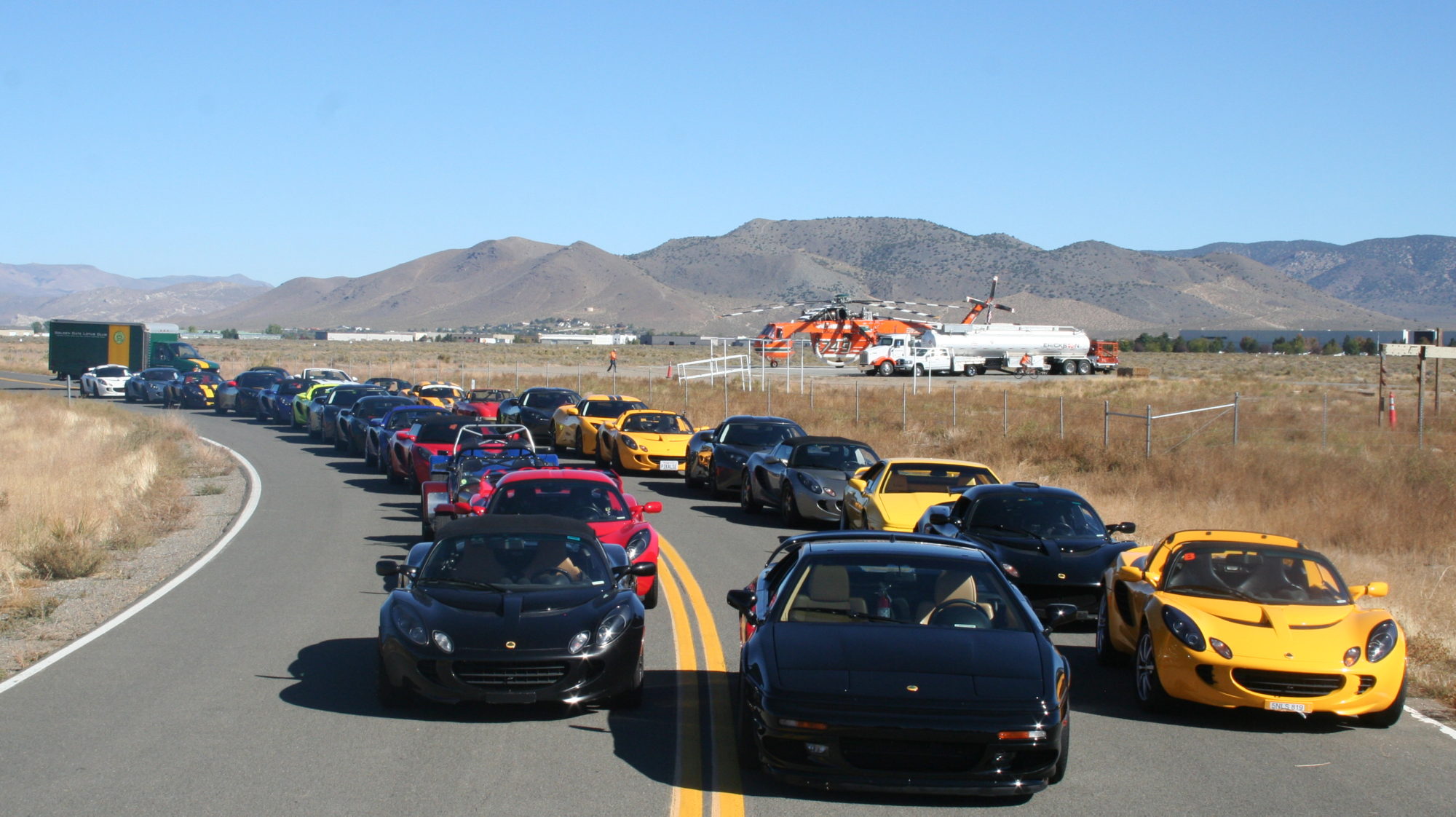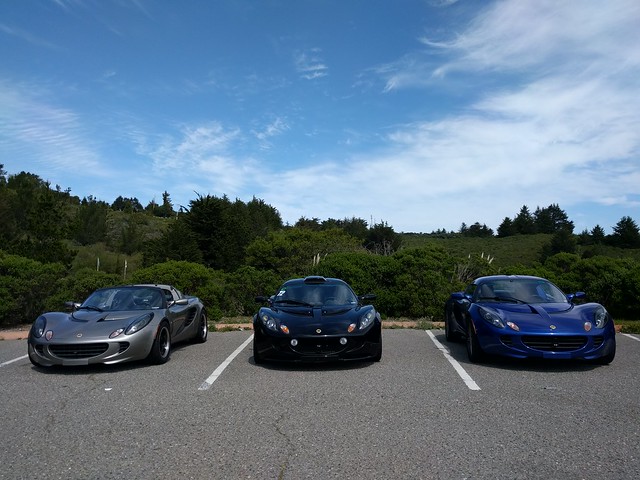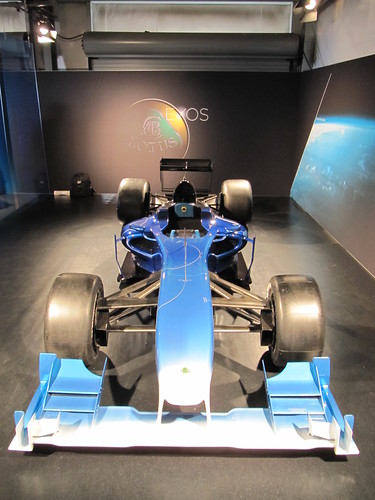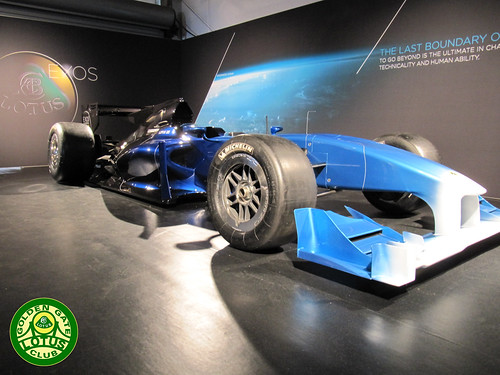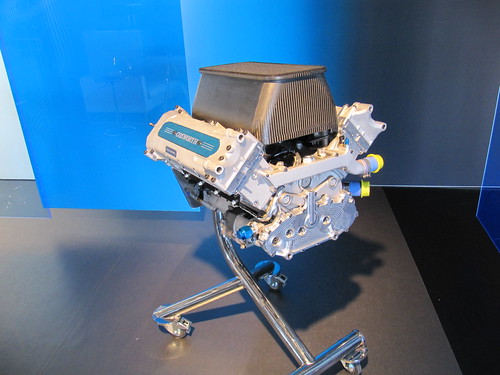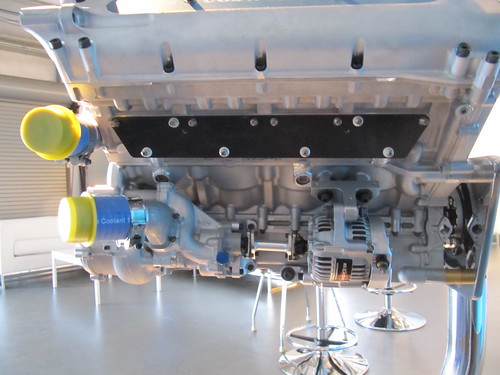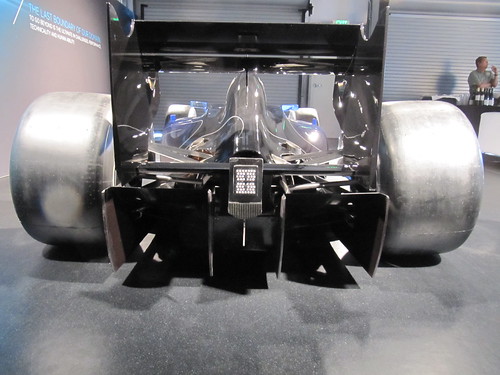One of the great things about being a car guy in CA is that there is a large number of fellow addicts around. This means that if you ever want to put some high dollar upgrades on a car you can usually find someone with a similar setup and get some first hand info about it. The latest to take advantage of this was Vincent from the GGLC who has been thinking of getting a set of single adjustable coilovers for his Elise and was having a tough time deciding between the Nitron 46mm Race Pro 1-Way and the BWR Penske Single Adjustable. Since the shocks run $2500+ he sent out some feelers on the forums and was able to get 3 cars together to try some back to back to back driving on some interesting roads for a highly subjective and completely unscientific comparison.
Mag Blue (Vincent)
2005 Elise
Base suspension
LSS wheels
R888 tires
Black (Scott)
2008 Exige S 240
Nitron 46mm Race Pro 1-Way (450/600 “soft” springs)
Exige Wheels
R888 tires
A-arms for extra camber
Titanium (Rahul)
2006 Elise
BWR Penske SA (500/700 “street/track” springs)
Rota wheels (15/16)
RA1 tires wider than stock (205/50R15 245/45R16)
Aligned, lowered and corner balanced to BWR spec
Route
The road we used for the test was CA-35 from CA-92 upto Alices Restaurant which is an extremely bumpy road with lots of cracks and undulations. It is however quite a twisty road so is very popular with sports cars, bikers and cyclists. We also did drive La Honda road from Alices down to CA-1 but that section of road is so smooth that we could barely tell the difference and ended up using the original stretch again.
This was far from a scientific test and is basically about subjective feel of the various suspensions on a fairly bumpy road. We did not have any specific test criteria going into this and just wanted to drive all 3 cars. I am just going to describe my feedback from all 3 in the order I drove them:
Nitron 46mm Race Pro 1-Way (450/600)
The first car I drove was Scotts Exige S240 on the Nitrons. The car was set to 15 FFH front and rear which is a little softer than the recommended Nitron settings. The two things I noticed were that the steering was a lot lighter (extra camber A-arms) and that ride did feel pretty harsh on the on the bumpy sections. I had plenty of confidence in the car but I was feeling a lot of bumps and vibration through both the seat and the wheel. That said it certainly was not undrivable – just harsher than I would want on an everyday drive.
Lotus Base Suspension
I thought the Nitrons were harsh but when I drove the base car over the same section of road I realised just how much worse the base car is. It was crashing and skipping over the bumps and got lots of unpleasant feedback through the wheel. I should add that this is in relation to the Nitron/Penskes only – the base suspension Elise is still an incredibly capable car and I drove mine for 90k miles on that suspension including dozens of trips down CA-35. Driving the base car is still a great experience and only felt bad because it was sandwiched between two more capable (and more expensive) setups.
BWR Penske Single Adjustable
After driving the other cars I took my car for a spin down the same road just to see how it handled those bumps. While I have ~800 miles on these shocks most of them were at COTA and I had not driven a truly bumpy road on them before. The car started the day in my “highway” settings of FS/FS-5 which are significantly softer than BWR suggested settings for the street. These settings disconnect you from road harshness and expansion joints but can hit the stops on big bumps which is no fun. After Vincent drive in my car he said it felt too soft so I moved it up to FS+10/FS+25 for Scott before following him on the second run. I did notice that the rear appeared to be “bouncing” a lot over the bumps which is something he reported as well at the next stop. I started out the first couple of miles on the same settings and quickly realised that while there was no high frequency harshness the car was just too bouncy and underdamped over the bumps. I pulled over and bumped it to FS+15/FS+35 which gave it a much more compliant ride with minimal harshness (less than the Nitrons).
Final results
In the end I have to say that the Nitrons and the Penskes are both a significant improvement over stock in terms of comfort and drivability. From this informal test I’d have to say that the Penskes can be adjusted to a softer setup (this might also be due to the extra tirewall from the 15/16 wheels) but some folks can find that to be too “Cadillac-y” and unconnected. The Nitrons were very good on the smoother sections but cannot be made as “soft” as the Penskes. That said we dont know if the softer adjustments cause the Penskes to lose a bit on track (not AutoX). I have driven 3 days at COTA with Penskes but that is possibly the smoothest track in the US plus without a back-to-back its hard to really judge.
In the end if you want a good aftermarket suspension you cant really go wrong with either of these options and both vendors will work further with you to come up with the right package for your specific needs. They are both a massive upgrade over stock in terms of drivability and I wish I had bought them years ago instead of waiting 90k miles to make the change.
Update: Added a note that the ride comfort of the Penskes is affected by the extra tire wall from the smaller wheels.
